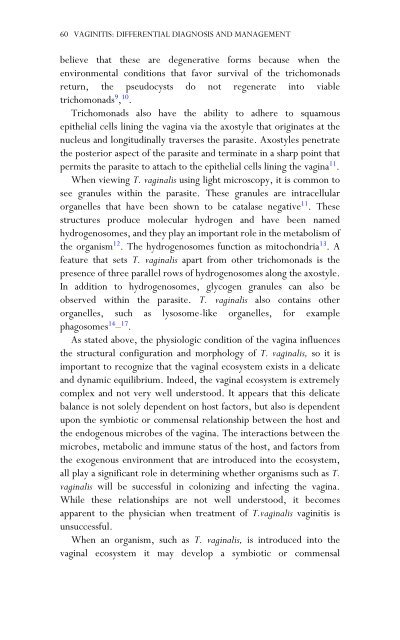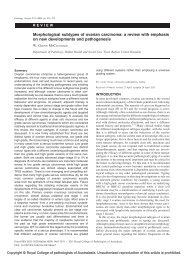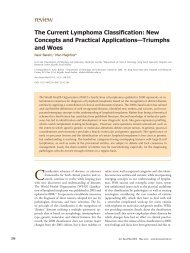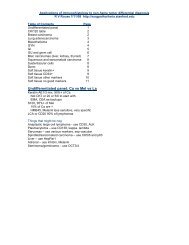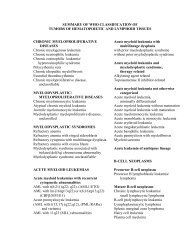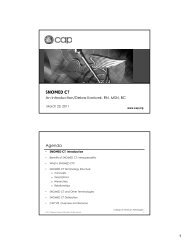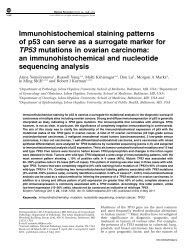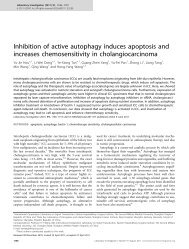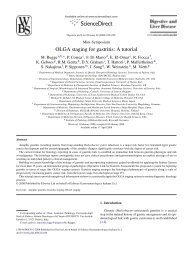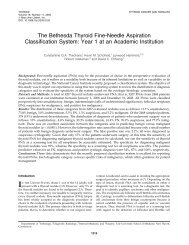Vaginitis: Differential Diagnosis and Management - BPA Pathology
Vaginitis: Differential Diagnosis and Management - BPA Pathology
Vaginitis: Differential Diagnosis and Management - BPA Pathology
- No tags were found...
Create successful ePaper yourself
Turn your PDF publications into a flip-book with our unique Google optimized e-Paper software.
60 VAGINITIS: DIFFERENTIAL DIAGNOSIS AND MANAGEMENTbelieve that these are degenerative forms because when theenvironmental conditions that favor survival of the trichomonadsreturn, the pseudocysts do not regenerate into viabletrichomonads 9 , 10 .Trichomonads also have the ability to adhere to squamousepithelial cells lining the vagina via the axostyle that originates at thenucleus <strong>and</strong> longitudinally traverses the parasite. Axostyles penetratethe posterior aspect of the parasite <strong>and</strong> terminate in a sharp point thatpermits the parasite to attach to the epithelial cells lining the vagina 11 .When viewing T. vaginalis using light microscopy, it is common tosee granules within the parasite. These granules are intracellularorganelles that have been shown to be catalase negative 11 . Thesestructures produce molecular hydrogen <strong>and</strong> have been namedhydrogenosomes, <strong>and</strong> they play an important role in the metabolism ofthe organism 12 . The hydrogenosomes function as mitochondria 13 . Afeature that sets T. vaginalis apart from other trichomonads is thepresence of three parallel rows of hydrogenosomes along the axostyle.In addition to hydrogenosomes, glycogen granules can also beobserved within the parasite. T. vaginalis also contains otherorganelles, such as lysosome-like organelles, for examplephagosomes 14 – 17 .As stated above, the physiologic condition of the vagina influencesthe structural configuration <strong>and</strong> morphology of T. vaginalis, so it isimportant to recognize that the vaginal ecosystem exists in a delicate<strong>and</strong> dynamic equilibrium. Indeed, the vaginal ecosystem is extremelycomplex <strong>and</strong> not very well understood. It appears that this delicatebalance is not solely dependent on host factors, but also is dependentupon the symbiotic or commensal relationship between the host <strong>and</strong>the endogenous microbes of the vagina. The interactions between themicrobes, metabolic <strong>and</strong> immune status of the host, <strong>and</strong> factors fromthe exogenous environment that are introduced into the ecosystem,all play a significant role in determining whether organisms such as T.vaginalis will be successful in colonizing <strong>and</strong> infecting the vagina.While these relationships are not well understood, it becomesapparent to the physician when treatment of T.vaginalis vaginitis isunsuccessful.When an organism, such as T. vaginalis, is introduced into thevaginal ecosystem it may develop a symbiotic or commensal


